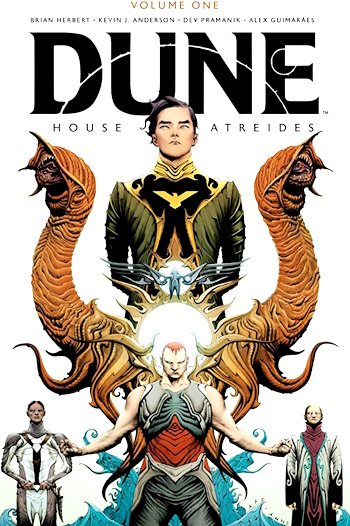Despite their mutual wariness, both teams were excited by the prospect that Microsoft would create graphical software for the Macintosh that would take personal computing into a new realm, and they went to dinner at a fancy restaurant to celebrate. Microsoft soon dedicated a large team to the task. “We had more people working on the Mac than he did,” Gates said.
“He had about fourteen or fifteen people. We had like twenty people. We really bet our life on it.” And even though Jobs thought that they didn’t exhibit much taste, the Microsoft programmers were persistent. “They came out with applications that were terrible,” Jobs recalled,
“but they kept at it and they made them better.”
Eventually Jobs became so enamored of Excel that he made a secret bargain with Gates: If Microsoft would make Excel exclusively for the Macintosh for two years, and not make a version for IBM PCs, then Jobs would shut down his team working on a version of BASIC for the Macintosh and instead indefinitely license Microsoft’s BASIC. Gates smartly took the deal, which infuriated the Apple team whose project got canceled and gave Microsoft a lever in future negotiations.
For the time being, Gates and Jobs forged a bond.
That summer they went to a conference hosted by the industry analyst Ben Rosen at a Playboy Club retreat in Lake Geneva, Wisconsin, where nobody knew about the graphical interfaces that Apple was developing.
“Everybody was acting like the IBM PC was everything, which was nice, but Steve and I were kind of smiling that, hey, we’ve got something,” Gates recalled. “And he’s kind of leaking, but nobody actually caught on.”
Gates became a regular at Apple retreats. “I went to every luau,” said Gates. “I was part of the crew.”
Gates enjoyed his frequent visits to Cupertino,
Steve Jobs by Walter Isaacson 238
where he got to watch Jobs interact erratically with his employees and display his obsessions. “Steve was in his ultimate pied piper mode, proclaiming how the Mac will change the world and overworking people like mad, with incredible tensions and complex personal relationships.” Sometimes Jobs would begin on a high, then lapse into sharing his fears with Gates. “We’d go down Friday night, have dinner, and Steve would just be promoting that everything is great. Then the second day, without fail, he’d be kind of, ‘Oh shit, is this thing going to sell, oh God, I have to raise the price, I’m sorry I did that to you, and my team is a bunch of idiots.’”
Gates saw Jobs’s reality distortion field at play when the Xerox Star was launched. At a joint team dinner one Friday night, Jobs asked Gates how many Stars had been sold thus far. Gates said six hundred.
The next day, in front of Gates and the whole team, Jobs said that three hundred Stars had been sold, forgetting that Gates had just told everyone it was actually six hundred. “So his whole team starts looking at me like, ‘Are you going to tell him that he’s full of shit?’” Gates recalled. “And in that case I didn’t take the bait.” On another occasion Jobs and his team were visiting Microsoft and having dinner at the Seattle Tennis Club. Jobs launched into a sermon about how the Macintosh and its software would be so easy to use that there would be no manuals. “It was like anybody who ever thought that there would be a manual for any Mac application was the greatest idiot,” said Gates.
“And we were like, ‘Does he really mean it? Should we not tell him that we have people who are actually working on manuals?’”
After a while the relationship became bumpier.
The original plan was to have some of the Microsoft applications—such as Excel, Chart, and File—carry the Apple logo and come bundled with the purchase of a
Steve Jobs by Walter Isaacson 239
Macintosh. “We were going to get $10 per app, per machine,” said Gates. But this arrangement upset competing software makers. In addition, it seemed that some of Microsoft’s programs might be late. So Jobs invoked a provision in his deal with Microsoft and decided not to bundle its software; Microsoft would have to scramble to distribute its software as products sold directly to consumers.
Gates went along without much complaint. He was already getting used to the fact that, as he put it, Jobs could “play fast and loose,” and he suspected that the unbundling would actually help Microsoft. “We could make more money selling our software separately,”
Gates said. “It works better that way if you’re willing to think you’re going to have reasonable market share.”
Microsoft ended up making its software for various other platforms, and it began to give priority to the IBM PC
version of Microsoft Word rather than the Macintosh version. In the end, Jobs’s decision to back out of the bundling deal hurt Apple more than it did Microsoft.
When Excel for the Macintosh was released, Jobs and Gates unveiled it together at a press dinner at New York’s Tavern on the Green. Asked if Microsoft would make a version of it for IBM PCs, Gates did not reveal the bargain he had made with Jobs but merely answered that “in time” that might happen. Jobs took the microphone. “I’m sure ‘in time’ we’ll all be dead,” he joked.
The Battle of the GUI
At that time, Microsoft was producing an operating system, known as DOS, which it licensed to IBM and compatible computers. It was based on an old-fashioned command line interface that confronted users with surly little prompts such as C:. As Jobs and his team began to work closely with Microsoft, they grew worried that it would copy Macintosh’s graphical user
Steve Jobs by Walter Isaacson 240
interface. Andy Hertzfeld noticed that his contact at Microsoft was asking detailed questions about how the Macintosh operating system worked. “I told Steve that I suspected that Microsoft was going to clone the Mac,”
he recalled.
They were right to worry. Gates believed that graphical interfaces were the future, and that Microsoft had just as much right as Apple did to copy what had been developed at Xerox PARC. As he freely admitted later, “We sort of say, ‘Hey, we believe in graphics interfaces, we saw the Xerox Alto too.’”
In their original deal, Jobs had convinced Gates to agree that Microsoft would not create graphical software for anyone other than Apple until a year after the Macintosh shipped in January 1983. Unfortunately for Apple, it did not provide for the possibility that the Macintosh launch would be delayed for a year. So Gates was within his rights when, in November 1983, he revealed that Microsoft planned to develop a new operating system for IBM PCs featuring a graphical interface with windows, icons, and a mouse for point-and-click navigation. It would be called Windows. Gates hosted a Jobs-like product announcement, the most lavish thus far in Microsoft’s history, at the Helmsley Palace Hotel in New York.
Jobs was furious. He knew there was little he could do about it—Microsoft’s deal with Apple not to do competing graphical software was running out—but he lashed out nonetheless. “Get Gates down here immediately,” he ordered Mike Boich, who was Apple’s evangelist to other software companies. Gates arrived, alone and willing to discuss things with Jobs. “He called me down to get pissed off at me,” Gates recalled. “I went down to Cupertino, like a command performance. I told him, ‘We’re doing Windows.’ I said to him, ‘We’re betting our company on graphical interfaces.’”
Steve Jobs by Walter Isaacson 241
They met in Jobs’s conference room, where Gates found himself surrounded by ten Apple employees who were eager to watch their boss assail him. Jobs didn’t disappoint his troops. “You’re ripping us off!” he shouted. “I trusted you, and now you’re stealing from us!” Hertzfeld recalled that Gates just sat there coolly, looking Steve in the eye, before hurling back, in his squeaky voice, what became a classic zinger. “Well, Steve, I think there’s more than one way of looking at it.
I think it’s more like we both had this rich neighbor named Xerox and I broke into his house to steal the TV
set and found out that you had already stolen it.”
Gates’s two-day visit provoked the full range of Jobs’s emotional responses and manipulation techniques. It also made clear that the Apple-Microsoft symbiosis had become a scorpion dance, with both sides circling warily, knowing that a sting by either could cause problems for both. After the confrontation in the conference room, Gates quietly gave Jobs a private demo of what was being planned for Windows. “Steve didn’t know what to say,” Gates recalled. “He could either say, ‘Oh, this is a violation of something,’ but he didn’t. He chose to say, ‘Oh, it’s actually really a piece of shit.’” Gates was thrilled, because it gave him a chance to calm Jobs down for a moment. “I said, ‘Yes, it’s a nice little piece of shit.’” So Jobs went through a gamut of other emotions. “During the course of this meeting, he’s just ruder than shit,” Gates said. “And then there’s a part where he’s almost crying, like, ‘Oh, just give me a chance to get this thing off.’” Gates responded by becoming very calm. “I’m good at when people are emotional, I’m kind of less emotional.”
As he often did when he wanted to have a serious conversation, Jobs suggested they go on a long walk.
They trekked the streets of Cupertino, back and forth to De Anza college, stopping at a diner and then walking
Steve Jobs by Walter Isaacson 242
some more. “We had to take a walk, which is not one of my management techniques,” Gates said. “That was when he began saying things like, ‘Okay, okay, but don’t make it too much like what we’re doing.’”

























